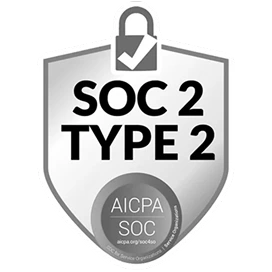What's got everyone so excited about AI?
In this webinar, we take you through how SentiSum can help your customer support team connect with the wider business through customer support and feedback analysis.
Watch the recording above to learn about SentiSum's vision, have a tour of our platform, and hear directly from one of our customers, Gareth from Hopin, on how they use SentiSum to discover customer stories to shape strategies in wider teams like Product.
What does SentiSum do?
Here at SentiSum, our main goal is to help support teams move from what has historically been a "cost center" perception and be seen more as the value and growth driver of a business.
Support teams talk to customers all day, every day. They know how the organisation and processes are perceived in the eyes of the users, they know what can improve retention, they know what can improve customer sentiment. The challenge is how to communicate that to the rest of the business in a quantified way, which is where we come in, as well as providing automations to help support teams run more efficiently.
How does SentiSum work?
SentiSum integrates directly with your customer support or review platform to automatically tag tickets as they come in through a type of AI called NLP (Natural Language Processing), analysing these insights to produce quantified, qualitative data in an easy-to-use platform.
This type of analysis can also understand the context of tickets to provide analysis on customer sentiment - how the customer is feeling.
Why is this important? It can give you really granular objective insights into what issues evoke what emotions in your users, and it can identify the drivers of NPS and CSAT.
All of these insights together allow you to talk at a level where your other teams, such as product operations teams or even marketing, can understand your feedback on the product, the customer communications, et cetera in a really objective way.
By comparison, manual tagging in support tickets and surveys can be quite subjective and broad level. The reporting can take a lot of time to put together, and there can be quite anecdotal evidence.
By harnessing automated tagging and reporting, you can be more objective, have readily available insights in real-time and speak the same language as the product and the operation teams with data backed evidence to help your customers' experiences be put first in business decisions.
What challenges did you have in product support before implementing SentiSum at Hopin?
Before SentiSum, Hopin struggled to get the balance right with tagging and categorizing issues that were coming in to the product support team in order to create usable reports and insights.
You've got to strike that nice level of - if you set your categories at too high of a level, there's no real value there because you can't drill down into the product and see what the problem is, but then on the inverse, if you drill down too deep and make your categories and your tags too granular, then you just get lost in the weeds with all of that.
Gareth's team found that even after spending time polishing the right tagging taxonomy for the support agents to implement, there was still pushback when trying to translate these insights into something usable for the product teams. With manual tagging, objectivity and consistency are hard to get right, meaning insights can be perceived as less reliable, and so the customer support team struggled to win arguments with product about what matters most to the customers.
Support could see these customer issues under the surface, particularly around event registration, but we couldn't win that argument with the product teams and that was where SentiSum came in for us.
How did you find switching from manual to automated tagging and reporting processes at Hopin?
Automated tagging and reporting is particularly useful at Hopin from an operations perspective, as it saves so much time for the agents not having to classify thousands of tickets or build manual reports. But categorizing tickets is the tip of the iceberg, from there, you can curate workflows, ticket deflections and self-serve options for customers.
It's my philosophy within the support operations team that it's my job and my duty to bend the systems as much as possible to fit the support agents rather than the other way around.
We've all been there where we've had to use a clunky system or a clunky workflow, or a clunky policy and adhere to it, and we sat there and wondered, why do we have to do this? Why can't we do something better? Well, this is one of those things.
From Gareth's perspective, a support agent's time is best spent doing intuitive, creative things, using their empathy and soft skills, not clicking buttons to tag tickets, so removing that element from their day-to-day also promotes better use of time for individuals.
Follow us on LinkedIn to stay up to date on upcoming webinars and events.
If you enjoyed the insights we discussed in this webinar, check out our Support Insights podcast, where we speak to customer-centric department leaders about a different topic every 2 weeks.

.svg)

.webp)



